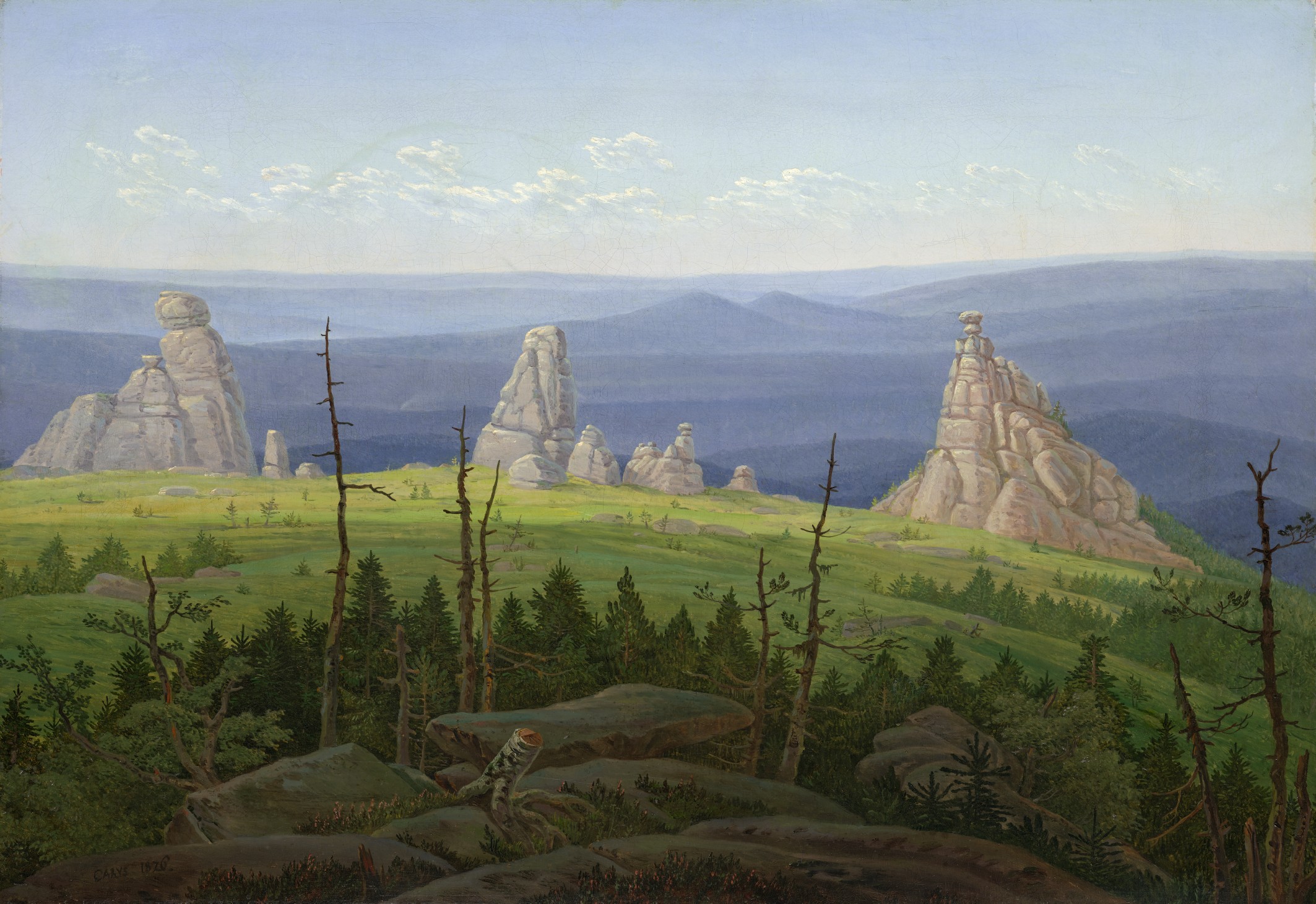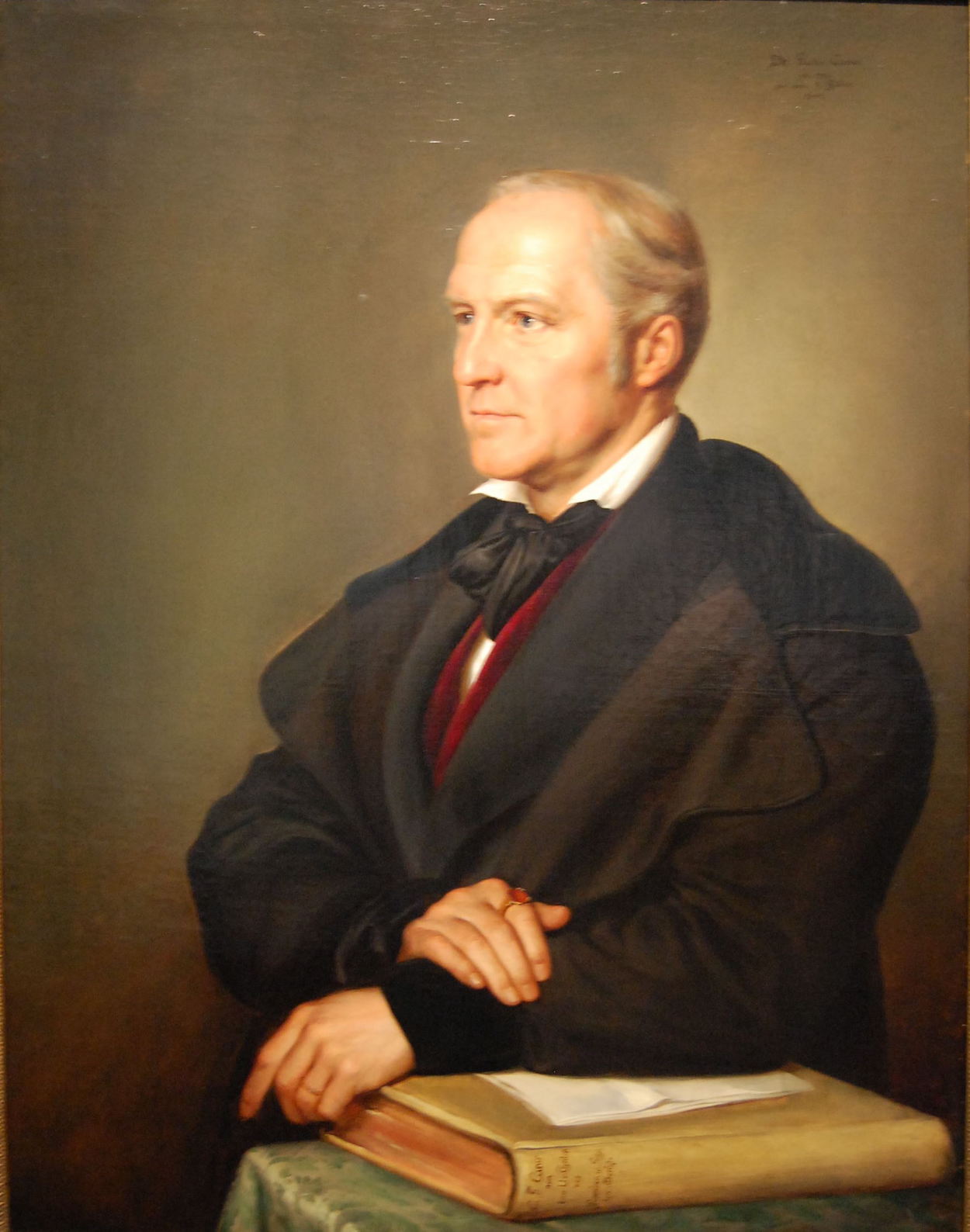The painting of the Three Stones exemplifies the connection between the Romantics’ apprehension of landscape as hauntingly vast and desolate with their scientific interest in accurate and graphic reproductions of geological formations. In his Nine Letters on Landscape Painting of 1831, Carus describes the Three Stones as historical testimony to geological history, as the “last vestiges of the primordial crags.” He saw in them a kind of geological physiognomy that invited interpretation. Here, however, his rather bold, scientific gaze is brought to bear on a view that transfers the concept of historicity to nature. Carus compares the Three Stones to “ruined towers” and so forges a link to a Romantic trope which, in the form of ruined Gothic churches, Caspar David Friedrich was fond of and which Carus, too, liked to revisit. Underlying it is the notion of continuity that is of such fundamental importance to Carus’s concept of Erdlebenbildkunst (“earth-life art”).
Carus travelled to the Riesengebirge or Giant Mountains in August 1820. He was following in the footsteps of Friedrich, who had been on several walking tours in the region and had there found numerous motifs for his paintings. The painting of the Three Stones can be traced back to drawings by Carus dated 15 August 1820. For the painting, however, he changed the brightness values of his gradation of depth so that the dark foreground would offset the brightly lit rocks and the highlands receding into the blue of the far distance.
We present today's masterpiece thanks to the Staatliche Kunstsammlungen Dresden. <3
P.S. If you miss travelling and hiking, here are the best paintings that were conceived by Wanderlust, a strong desire to wander or travel and explore the world. <3


 Carl Gustav Carus
Carl Gustav Carus